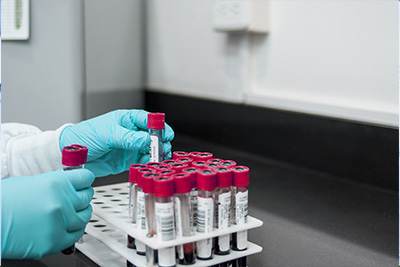-
![2-Ethylhexyl Thiog···]() 2025-01-07 2-Ethylhexyl Thioglycolate in the Pr···
2025-01-07 2-Ethylhexyl Thioglycolate in the Pr···2-Ethylhexyl thioglycolate is an essential industrial chemical widely used in the production of specialty chemicals. Its unique properties make it valuable for various applications, including plasticizers, coatings, and lubricants. This compound plays a crucial role in enhancing the performance and quality of these specialty chemicals, contributing significantly to industries such as automotive, construction, and manufacturing. Due to its versatility and effectiveness, the demand for 2-ethylhexyl thioglycolate continues to grow, solidifying its importance in modern chemical manufacturing processes.
read more > -
![Exploring Di-n-but···]() 2025-01-07 Exploring Di-n-butyltin Oxide (DBTO)···
2025-01-07 Exploring Di-n-butyltin Oxide (DBTO)···This study investigates the use of di-n-butyltin oxide (DBTO) as an effective stabilizer for polyvinyl chloride (PVC). DBTO plays a crucial role in enhancing the thermal stability and prolonging the service life of PVC materials, which is essential for plastic manufacturers. The research highlights the chemical properties and mechanisms through which DBTO improves PVC's resistance to degradation, thereby ensuring its quality and durability in various applications. This exploration is vital for the industry, as it provides insights into optimizing PVC formulations for better performance and longevity.
read more > -
![Dibutyl Tin Dilaur···]() 2025-01-07 Dibutyl Tin Dilaurate: Enhancing Pol···
2025-01-07 Dibutyl Tin Dilaurate: Enhancing Pol···Dibutyl tin dilaurate (DBTDL) is widely used in the polymer industry to enhance various properties of materials. This catalyst improves the efficiency and effectiveness of polymerization processes, leading to stronger, more durable products. Its ability to accelerate reactions without degrading the quality of the final product makes it invaluable. Additionally, DBTDL offers safety advantages due to its relatively low toxicity compared to other metal catalysts, making it a preferred choice in industrial applications. Despite these benefits, proper handling and storage guidelines must be followed to ensure workplace safety.
read more > -
![n-Butyltris(2-ethy···]() 2025-01-07 n-Butyltris(2-ethylhexanoate): A Ver···
2025-01-07 n-Butyltris(2-ethylhexanoate): A Ver···"N-Butyltris(2-ethylhexanoate) is a multifunctional compound widely utilized in manufacturing processes. Its versatile properties make it suitable for various industrial applications, including as a plasticizer, catalyst, and stabilizer. This compound enhances the performance of materials in construction, automotive, and electronics sectors by improving flexibility, durability, and thermal stability. Additionally, its use contributes to more efficient production methods and cost-effectiveness."
read more > -
![Tetra Butyltin in ···]() 2025-01-07 Tetra Butyltin in Industrial and Lab···
2025-01-07 Tetra Butyltin in Industrial and Lab···Tributyltin (TBT) is widely utilized in both industrial and laboratory environments due to its unique properties. In industry, TBT serves as an effective stabilizer in PVC production and acts as a potent biocide in anti-fouling paints for marine applications. Laboratories often employ TBT as a catalyst in organic synthesis reactions, particularly in the formation of esters and ethers. Despite its efficacy, concerns over its toxicity and environmental impact necessitate careful handling and disposal practices. This summary highlights the versatile applications of TBT while underscoring the importance of responsible use and management.
read more > -
![Tri-n-butyltin Hyd···]() 2025-01-07 Tri-n-butyltin Hydride: Applications···
2025-01-07 Tri-n-butyltin Hydride: Applications···Tri-n-butyltin hydride (TBTH) is a crucial reagent in organotin chemistry, widely used for radical reactions and synthesis of complex organic molecules. Its ability to donate a hydrogen atom makes it invaluable in various chemical transformations. However, TBTH poses significant safety risks due to its toxicity and flammability. Proper handling and storage guidelines must be strictly followed to prevent exposure and potential hazards. Effective ventilation, use of personal protective equipment, and adherence to disposal protocols are essential for safe usage. Understanding both its applications and safety precautions is vital for researchers working with this compound.
read more > -
![How O-Isopropyl Et···]() 2025-01-07 How O-Isopropyl Ethylthiocarbamate A···
2025-01-07 How O-Isopropyl Ethylthiocarbamate A···The article explores the impact of O-Isopropyl Ethylthiocarbamate on chemical reactions, highlighting its role as an effective catalyst in various organic transformations. Key insights include its ability to enhance reaction rates and improve yields through stable thioester intermediates. The study underscores its significant application in synthesizing complex molecules, offering a promising tool for chemists in drug development and materials science.
read more > -
![Dimethyltin Dichlo···]() 2025-01-07 Dimethyltin Dichloride: An Overview ···
2025-01-07 Dimethyltin Dichloride: An Overview ···Dimethyltin dichloride (DMTC) is a chemical compound with significant toxicological implications and considerable environmental impact. This guide reviews its health risks, including acute and chronic exposure effects such as respiratory issues, skin irritation, and potential long-term organ damage. DMTC's release into the environment contributes to bioaccumulation in aquatic ecosystems, posing threats to both wildlife and human populations reliant on affected water sources. The document emphasizes the importance of stringent safety measures and proper handling protocols to mitigate these adverse effects.
read more > -
![What You Need to K···]() 2025-01-07 What You Need to Know About 2-Ethylh···
2025-01-07 What You Need to Know About 2-Ethylh···2-Ethylhexyl thioglycolate (EHT) is a compound increasingly utilized in surface treatments to enhance material durability. This substance acts as an effective stabilizer and processing aid, contributing to the longevity and performance of materials under various environmental conditions. Its application spans across multiple industries, including automotive, construction, and manufacturing, where it improves resistance to wear, tear, and UV degradation. EHT's unique chemical properties make it suitable for both protective coatings and polymer-based materials, ensuring surfaces remain intact and functional over extended periods. Overall, incorporating EHT in surface treatments significantly boosts material resilience and extends their service life.
read more >









